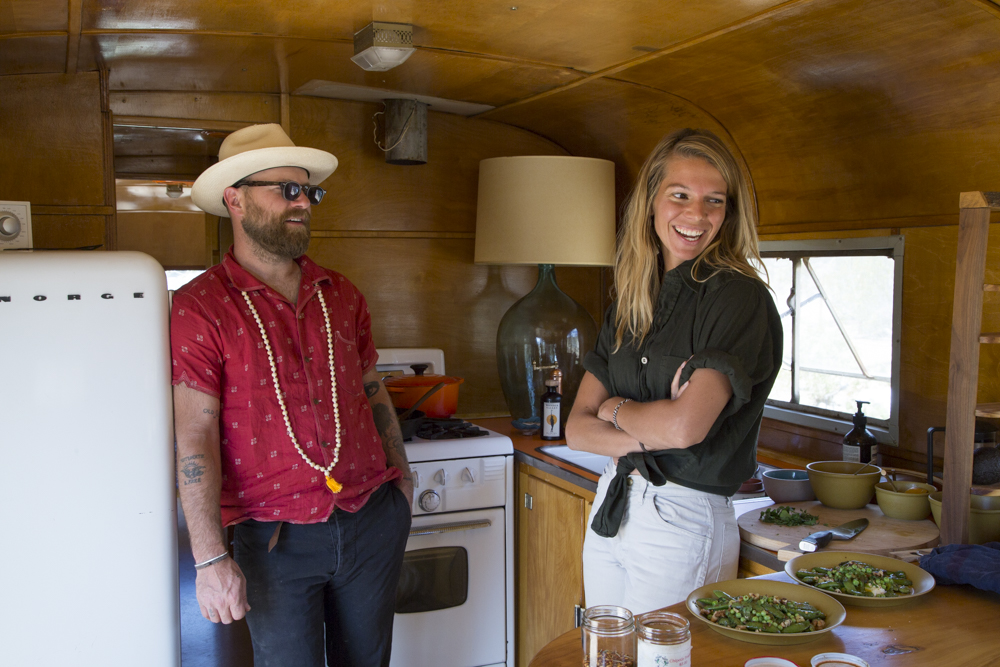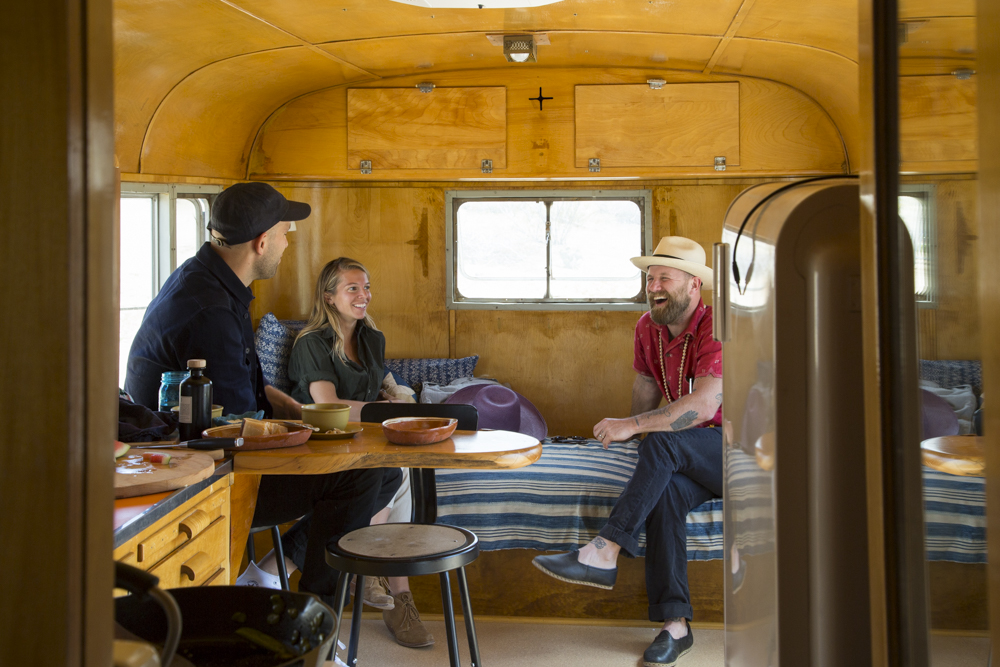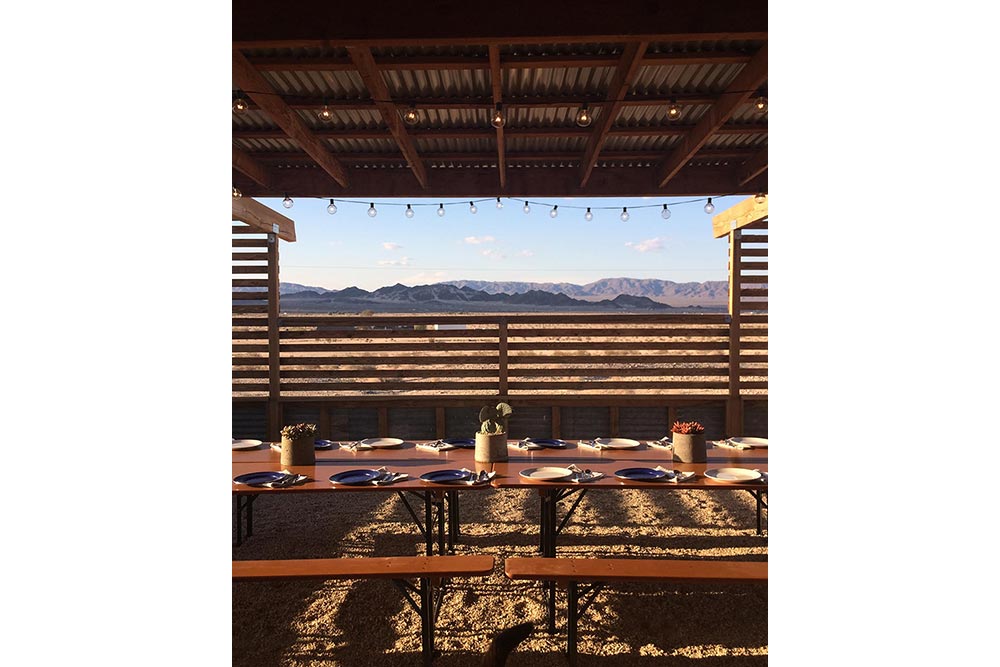Snap Peas, Fava Beans, Ricotta Mint and Wonder Valley Olive Oil
Jay and Alison’s Snap Pea and Ricotta Salad
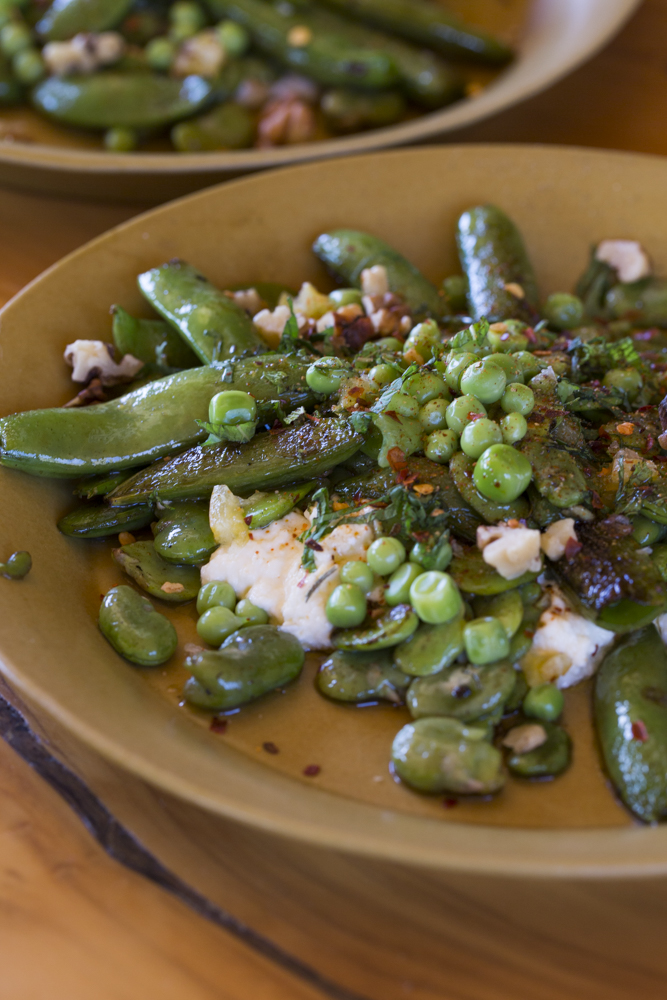
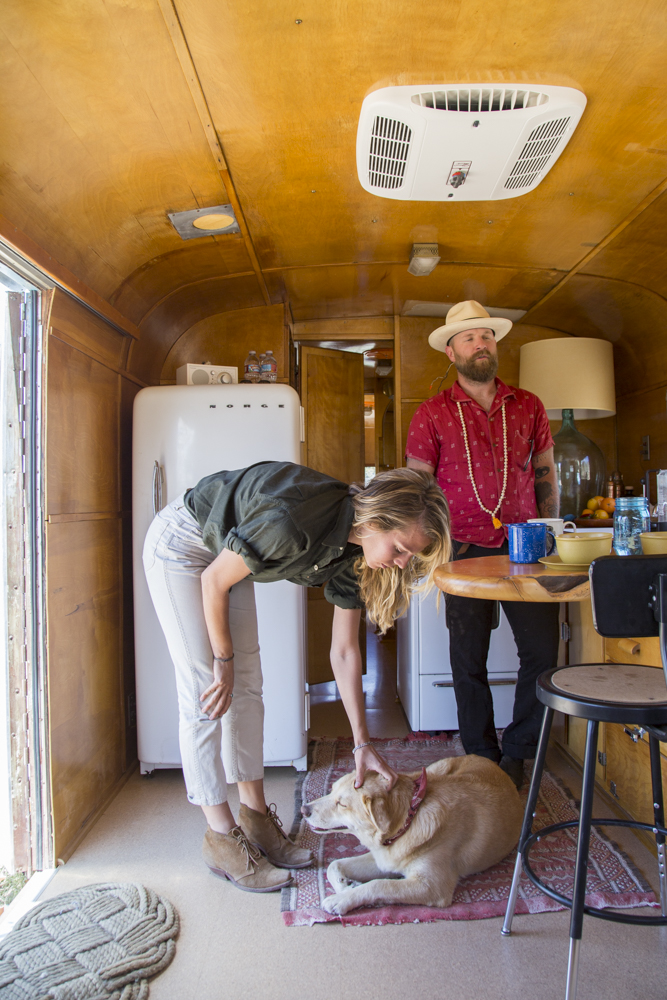
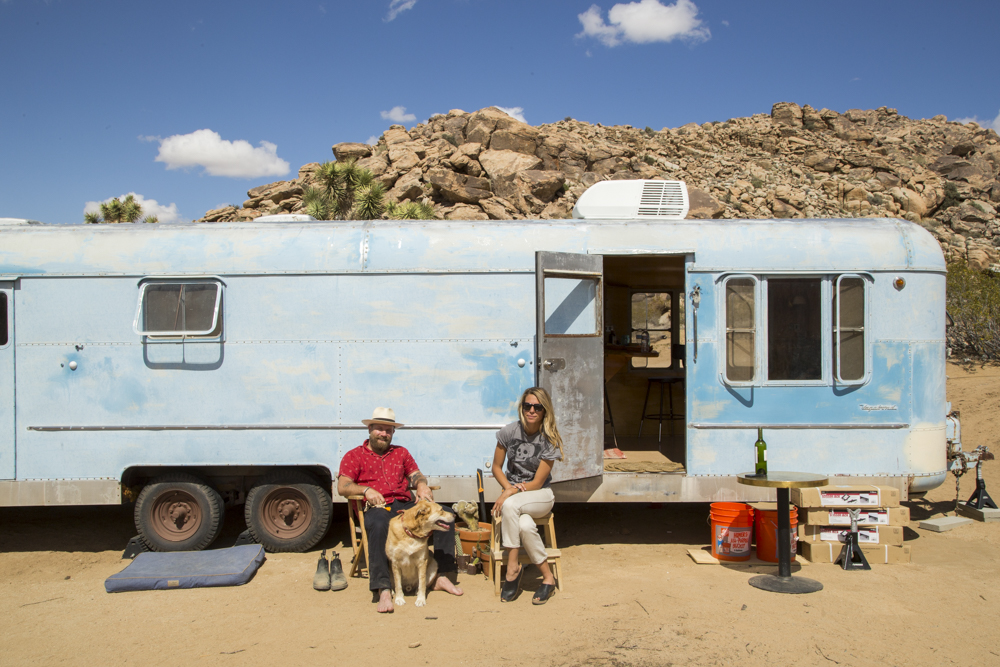
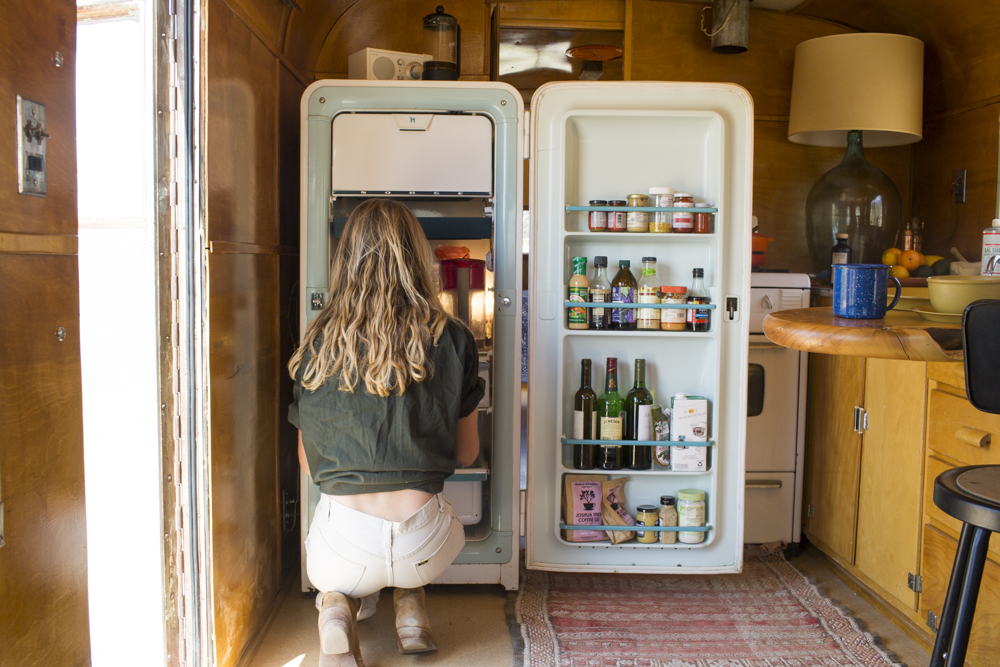
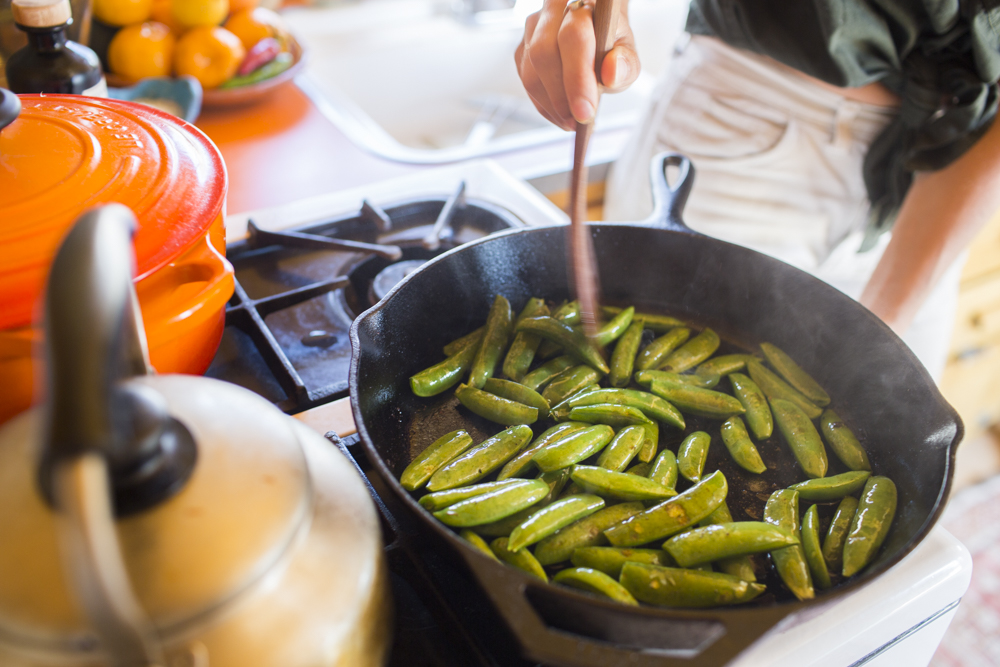
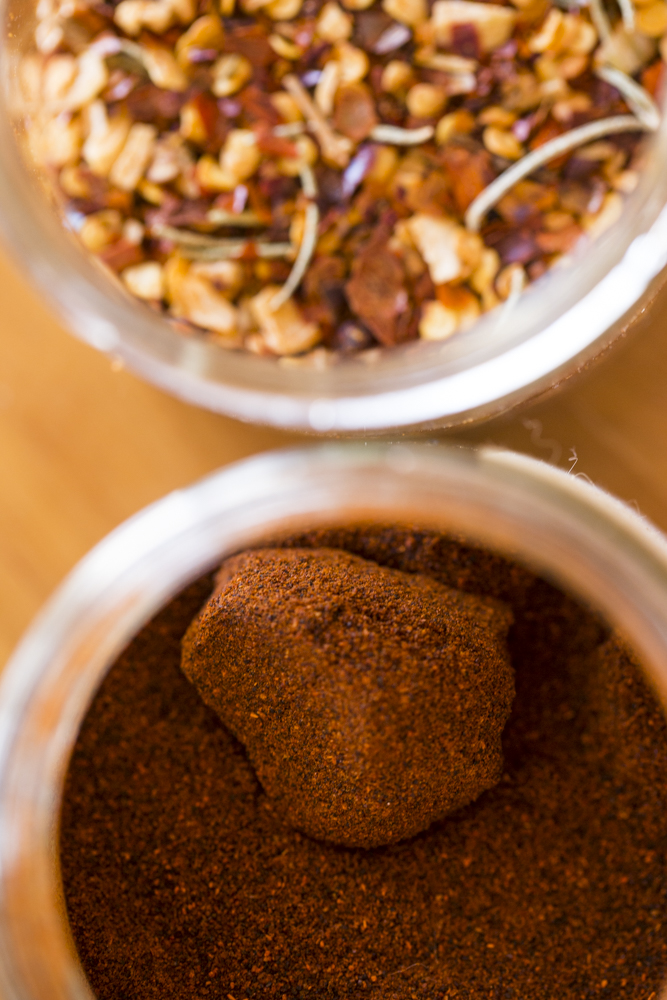
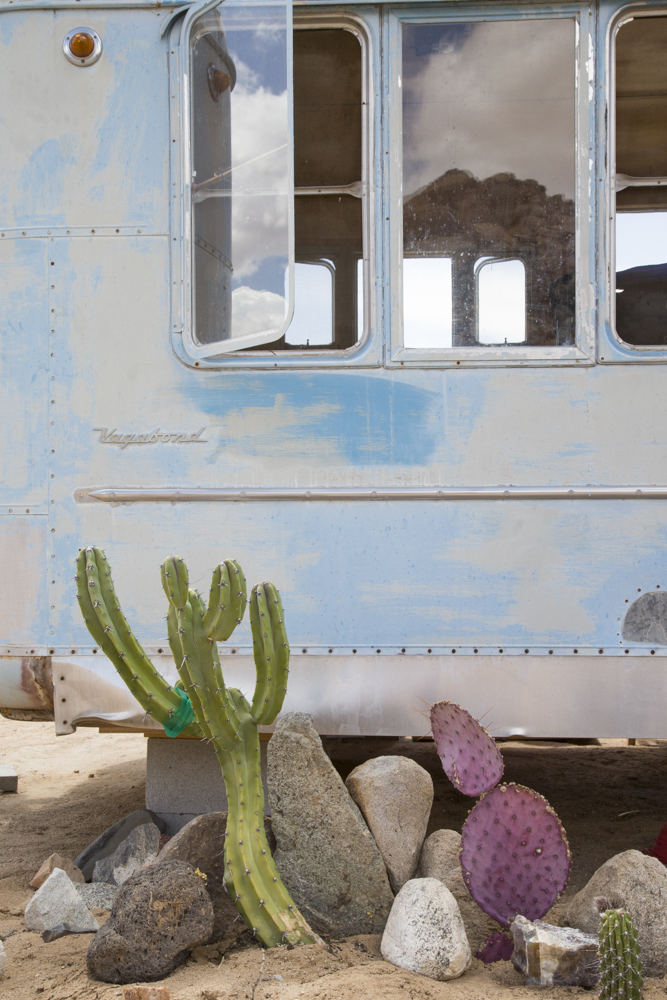
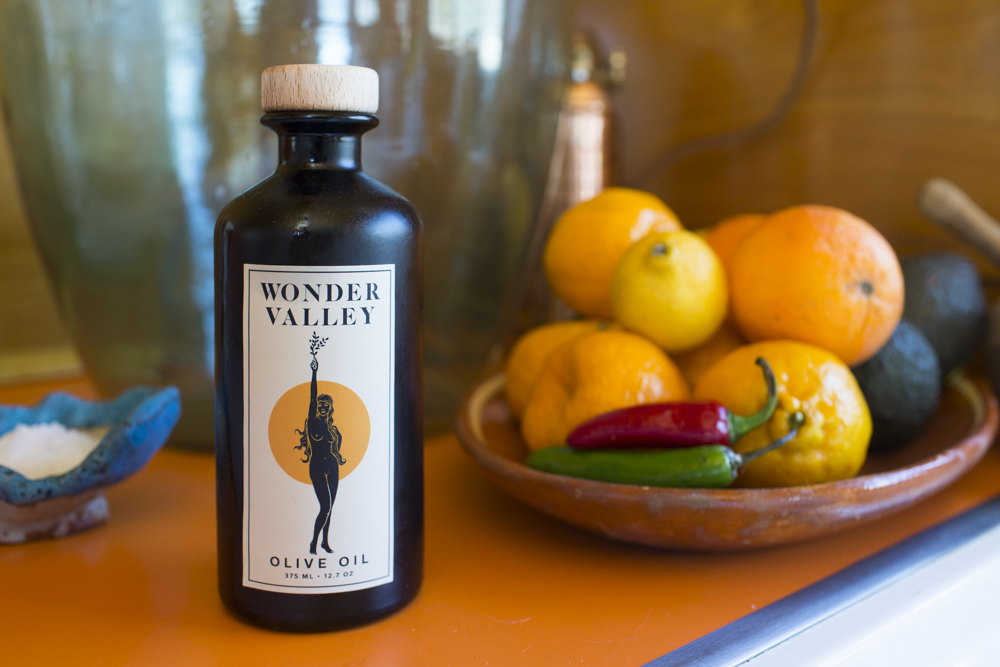
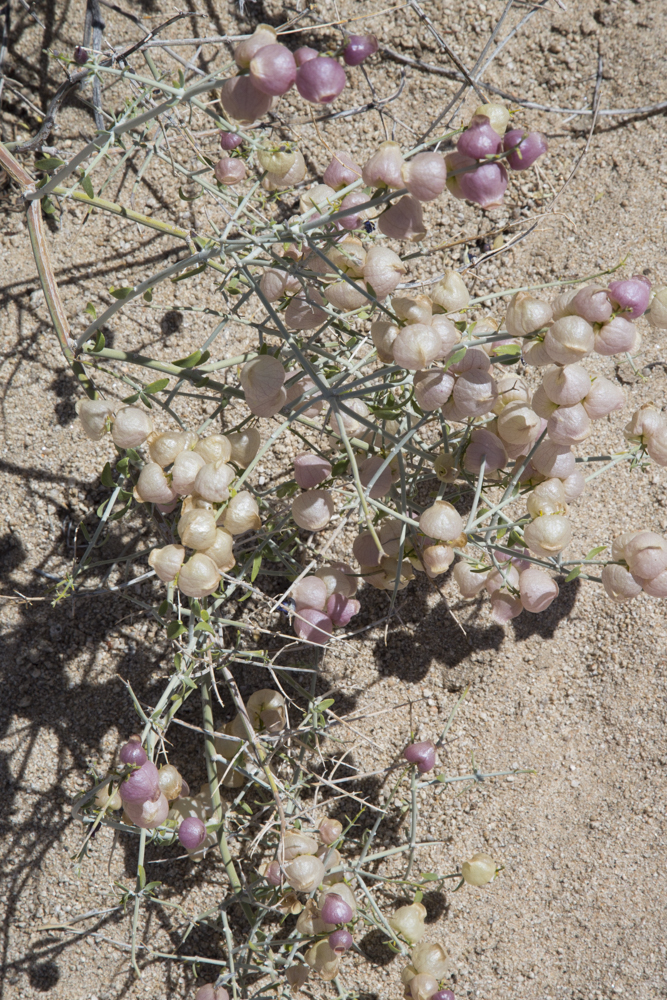
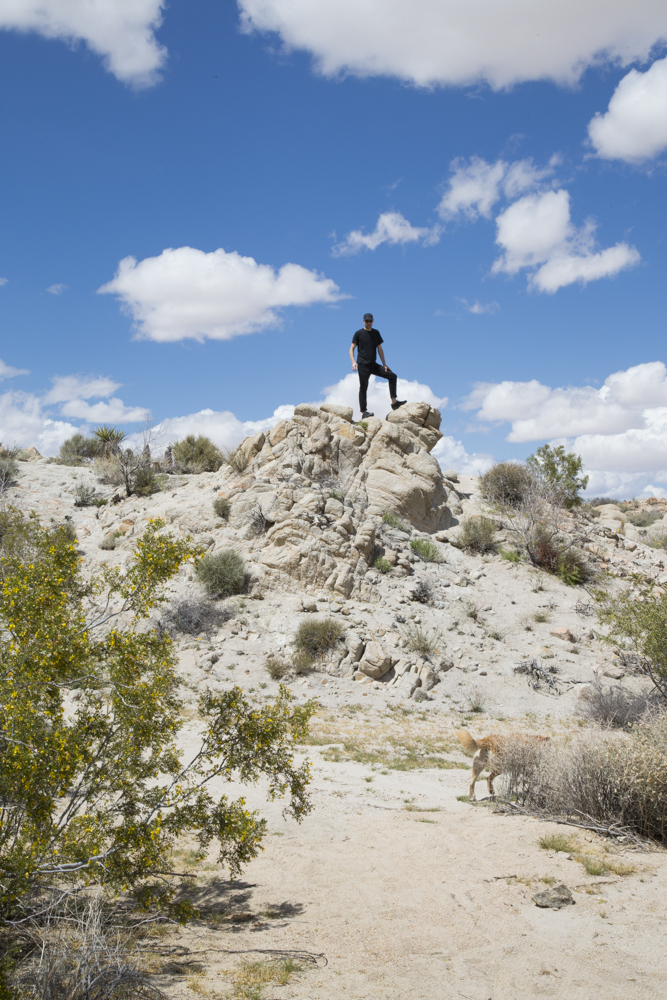
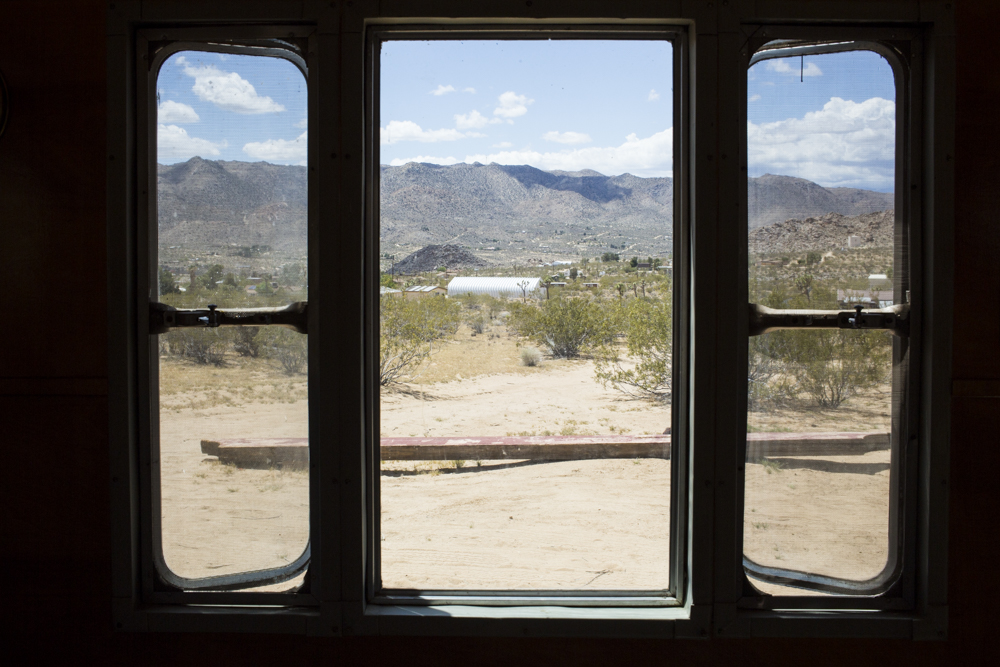
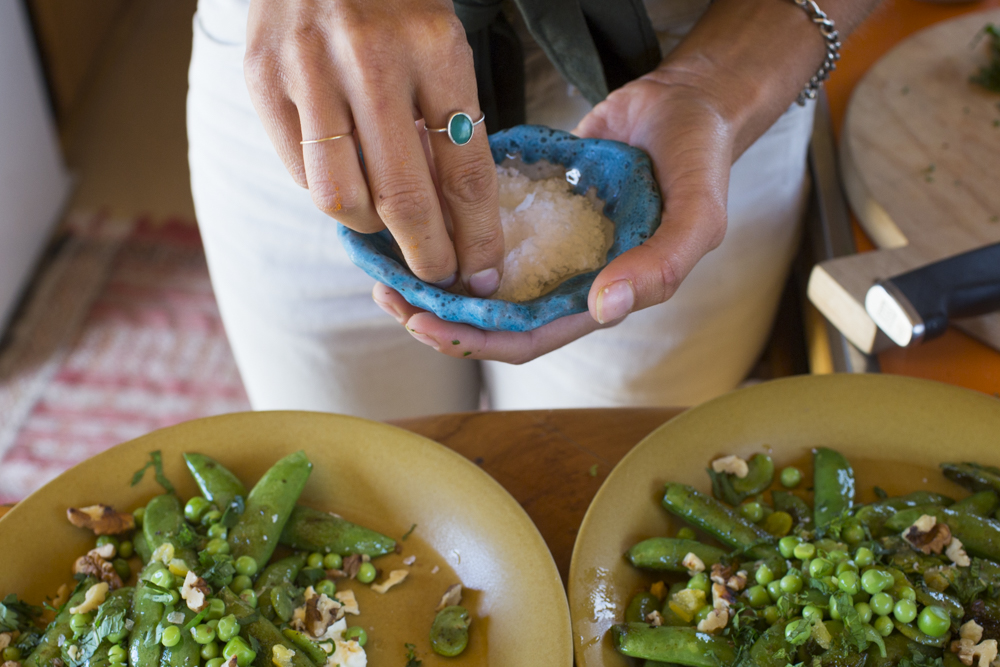
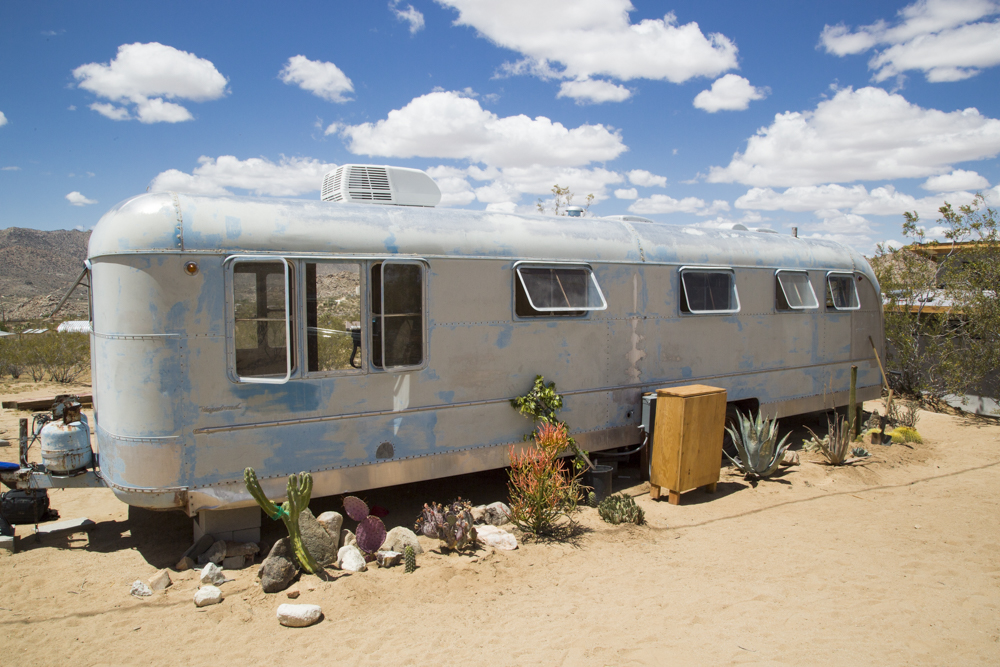
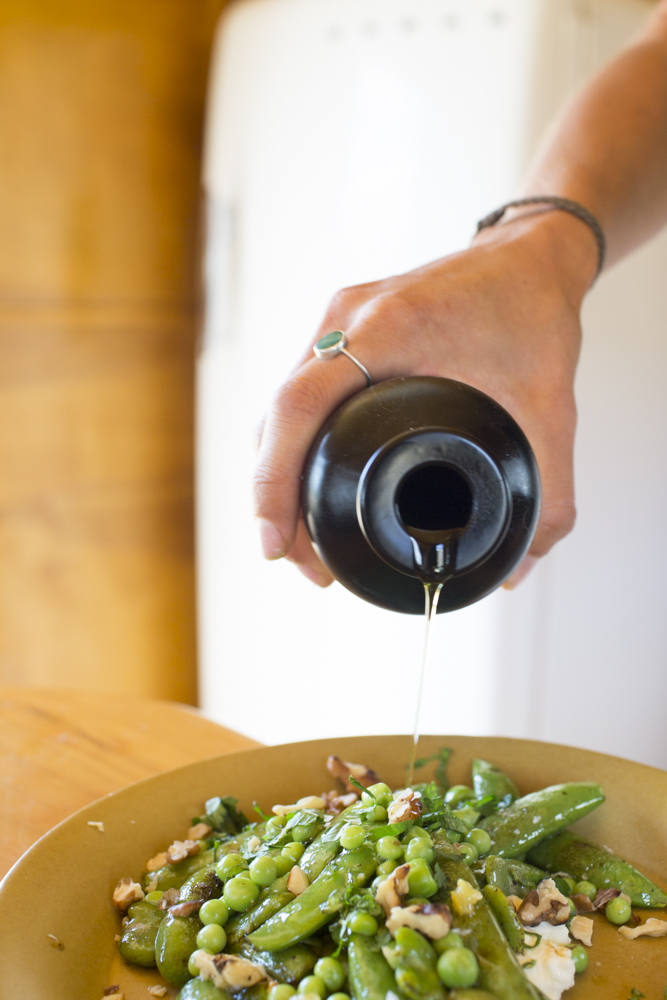
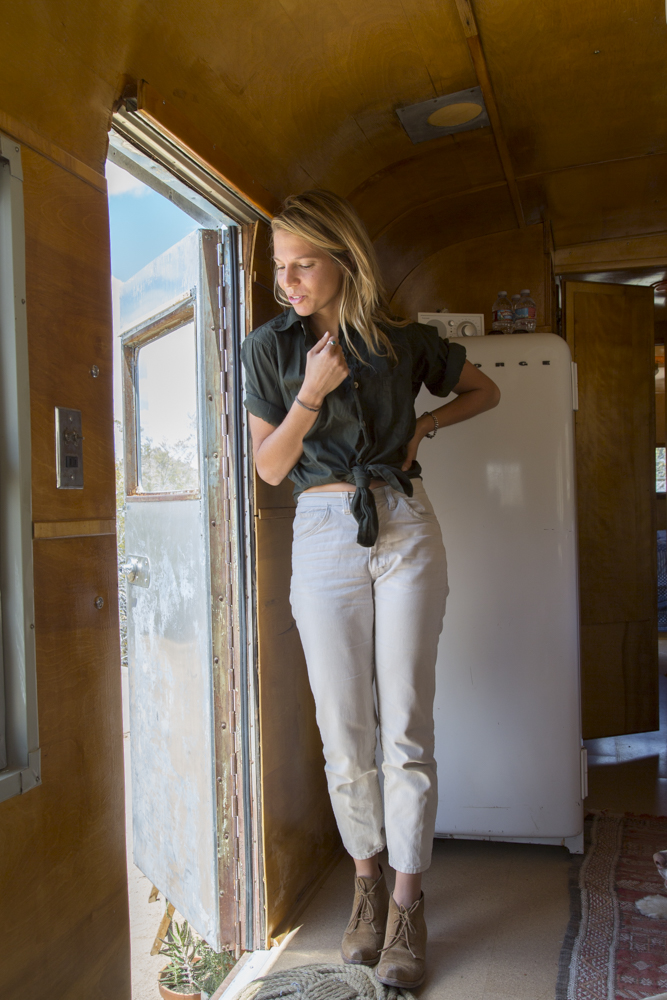
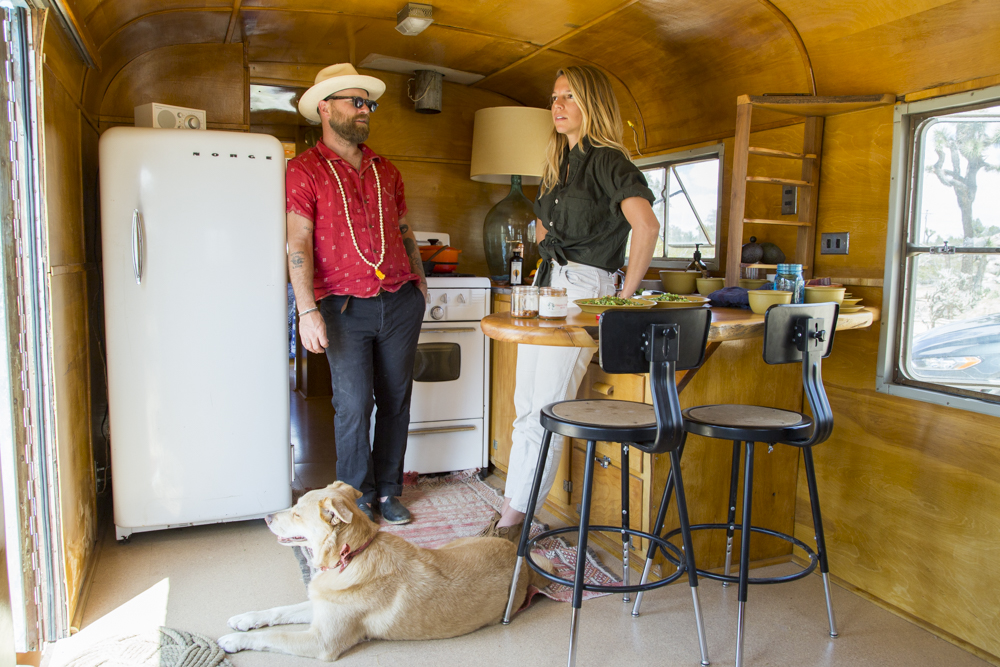
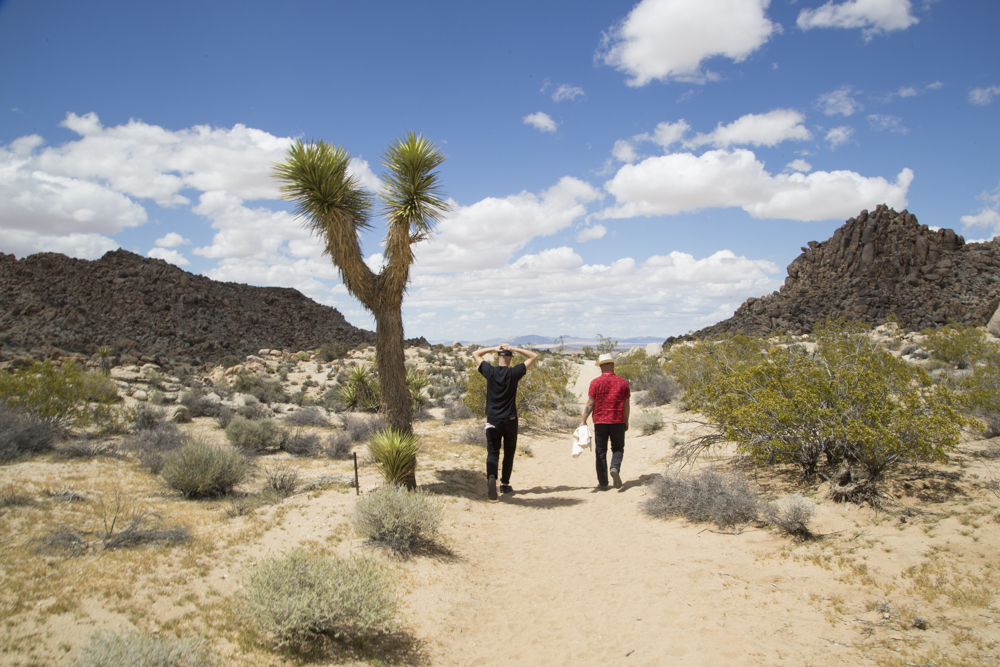
POSTED UNDER
- California,
- Joshua Tree
NOTES
We used a sheep’s milk ricotta here, but any full-fat high quality ricotta will do. Just don’t get the cheap stuff! Fava bean season is short, and it is upon us, so grab them while you can.
RECIPE
DIFFICULTY
EASY
SERVES
2
PREP TIME
10 MINS
Snap Pea and Ricotta Salad
-
1cupfresh English peas, shucked
-
2cupsfava beans, shucked
-
1/4cupwalnuts
-
2cupssnap peas, trimmed
-
whole milk ricotta
-
1tspminced preserved lemon (peel and pulp)
-
Wonder Valley olive oil
-
coarse sea salt to taste
-
1pinchAleppo pepper
-
2tspfresh mint leaves, thinly sliced
-
1tspcilantro
POSTED UNDER
- California,
- Joshua Tree
If you are wondering what it would be like to pack your stuff and move to the desert, Jay and Alison are here to tell you it’s not a bad idea. These two have worked for companies like Levi’s and The Ace Hotel, started fashion labels, traveled the globe and staged in Spanish kitchens. And then they decided to put down roots in Joshua Tree, a part of California that feels like the moon, and the saloon is still the only place to hang out. Busy as ever, Jay and Alison are building their dream house, and living in a refurbished 1960s airstream while they do it. They host dinners with Los Angeles chefs in their friend, artist Jack Pierson’s outdoor, make-shift dining set up, and they are building their brand, Wonder Valley, a small production of some of the most delicious olive oil you have ever tasted. But this is not just olive oil, it is a beautiful object, with custom glass bottles painted matte black, silkscreened labels and a wooden top. These are the details that Jay and Alison never overlook, because, why should anything in your life not be thoughtful and considered?
Jay and Alison Carroll in Their Own Words
Julia Sherman: What do you wish people understood about olive oil?
Alison Carroll: Olive oil is a fruit juice, not a shelf stable condiment. It should be purchased fresh each year from the new harvest, as the flavors and health benefits fade over time. Light, heat and time are olive oil’s enemies – buy it in a dark bottle and don’t store next to your stove.
JS: People are overwhelmed by olive oil in the same way they are about selecting wine. How much education does one need?
AC: If you’re concerned about quality – take a sip of an oil on its own, without food. Your taste buds can tell you if it’s a fresh and extra virgin-grade oil or an old, rancid one.
JS: Are there many people making olive oil in California? I feel like it is kind of a new thing.
AC: Yeah, so California has been growing olives for hundreds of years, but it was really only the black olive brined and canned — that was our bread and butter. And then some really wealthy vintners in Sonoma were like, ‘We have these great old trees, why aren’t we doing something with them?’ This woman named Nan McEvoy, who was of the de Young family, started it all. It was just her hobby. She was like, ‘We should be making olive oil, I’m going to do this.’ So she spent tons of money and started growing really great European tree varieties on her property. As a result, a lot of California producers have Nan McEvoy’s trees that she sold. And she just kind of made it possible, and then everyone else just got started.
JS: What made you first get into food?
AC: I wanted to cook, so I went and got an apprenticeship in Barcelona and they kicked my butt. I have never worked harder, and I was like, ‘I don’t know if I can hang this lifestyle.’ But one of the cool things about that job was the buying. We had 42 food purveyors that came in every week, it was really unusual. Small fishermen and mushroom foragers and would just come in with a little basket, that was it. And I really liked working with them, that was the highlight of it. So when I came to California to be with Jay, I knew I had to do something related to sourcing or production.
JS: So how did Wonder Valley start?
AC: I moved to SF and wanted to work in agriculture, and I became a member of the California Olive Oil Council. Then we moved to LA for Jay’s job and I had to give that up. I had learned so much about the topic and I wanted to stay involved. Our current Miller was on the taste panel that I oversaw every week. He taught me how to taste, he taught me about everything I know, he’s brilliant. So we decided to work with him to make our own oil. The key to good oil is in the Miller.
JS: Is this business scalable? As you mentioned, so many hands touch these bottles.’ I am wondering what your long-term vision for Wonder Valley is?
Jay Carroll: We’ve both have worked on so many projects with 5-year plans, and sometimes that has gotten in the way of making beautiful things. We wanted to launch and take the first few years to just think about it, make beautiful things and put our passions forward before all else. I think if we continue to do that, we’ll figure out how to grow in way that feels natural to the brand and our goals of presenting ‘grandeur in simplified living.’
JS: Tell me how you and Jay met. What did you see in one another’s writing and blogging that compelled you to meet in person?
AC: In 2012 we were both just fans of one another’s blogs, and become real-life pen pals right away. Jay would send me things he found along the road, and I would send him jams and hot sauces I had made. His photography and storytelling are what got me, there was something magnetic about him. At the time, I was on the tail-end of living in Philadelphia, heading to Barcelona to stage in a kitchen for 6 months. Before I headed abroad, we decided to meet in SF. That first ‘date’ lasted two weeks, and then every date after we met in a new country: Turkey, Spain, Morocco, France, Japan. We lived together in SF and LA before putting roots in Joshua Tree and calling the desert home.
JS: What does the desert do for you that Los Angeles or the Bay Area could not?
AC: Space, both mental and physical. We live on a piece of land that tucks into boulders of the national park. We’re able to have the routines we always intended but could never stick with in the city–healthy eating, meditation, daily hikes and a balance of work/leisure with the pursuit of personal projects.
JS: Is it isolating to be out here?
AC: We live in the middle of nowhere, but the world seems to come to us–friends from NYC, LA, and Tokyo visit frequently. What might’ve been a quick drink catch-up in the city is now a daylong hang with cooking, hiking, swimming, bonfires. There’s also so much to be said about limitations. The limitations the desert imposes, if you allow it, can be terrific. You have to get your hands dirty with living out here, and that breeds resourcefulness and creativity.
JS: Tell me about the dinners you host in Joshua Tree. How did that start, and who have you collaborated with?
JC: We traveled to Cuba a few years back and loved the paladars — restaurants operating out of family homes. We created our own paladar in a Wonder Valley artist Jack Pierson’s homestead cabin, a beautiful and simple one with a plywood clad interior and a pergola that mirrors the shape of the structure. The cabin has electricity and a sink – that’s it. So we created a cinder block fire pit, and that’s how we cook the entire menu for these events.
JS: Who does the cooking? Is it just you guys?
AC: My mentor, chef Zach Jarrett, collaborates with us for the menu and supper. We’ll bring in other friends, whether it’s a vintner or musician. The light is magic in Wonder Valley and the events feel really special out there. The next one is 5/21. Join us!
